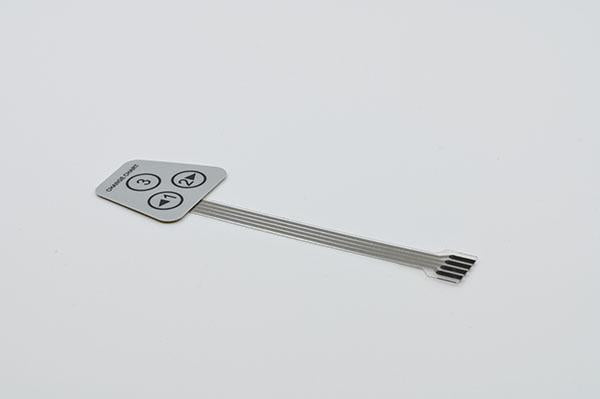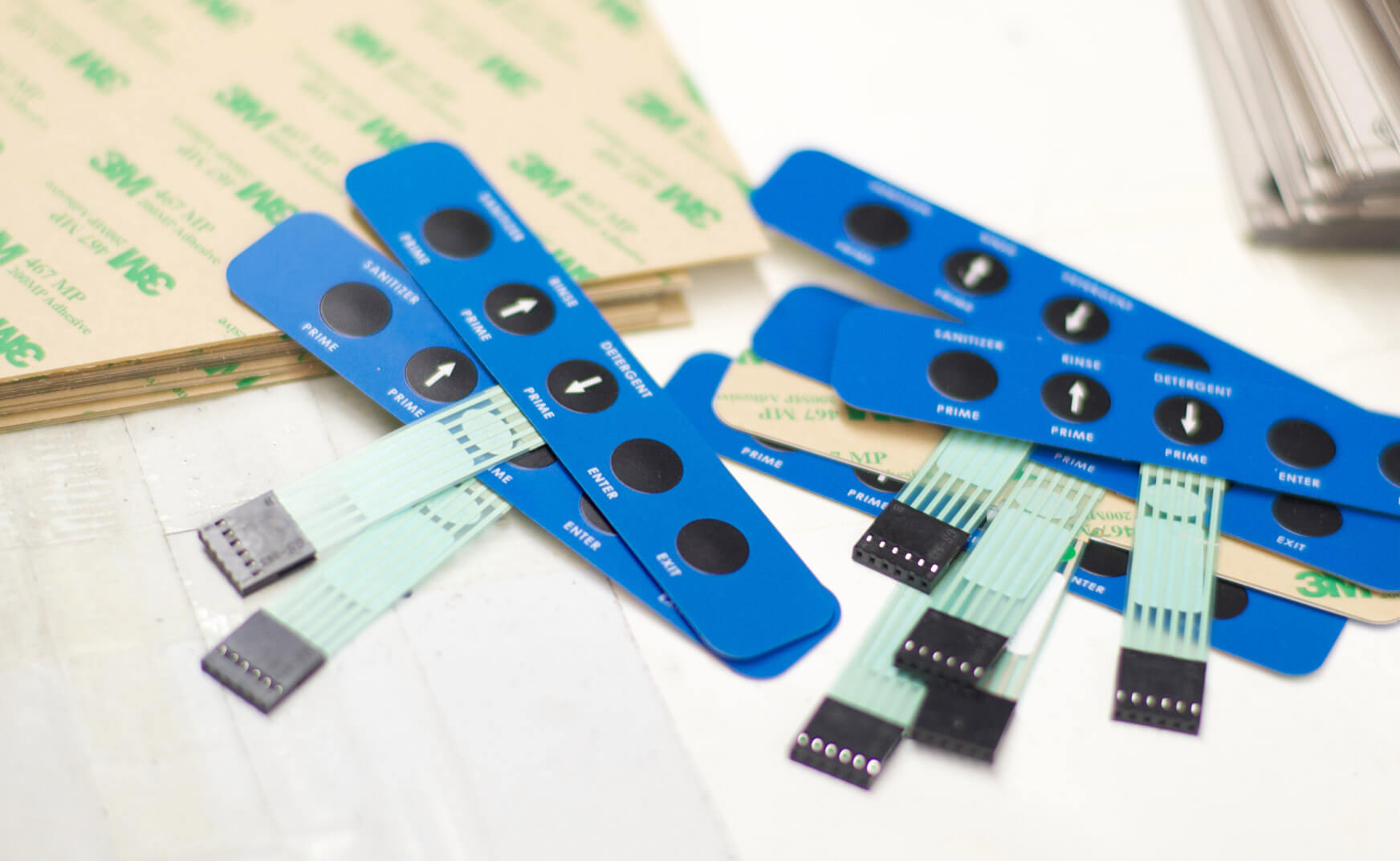Recognizing the Value of Membrane Switches in Interface
Membrane buttons are important components in the layout of effective customer interfaces, promoting not only capability however also improving aesthetic charm and user communication. Their unique functions, such as resistance to environmental aspects and customizable styles, make them ideal for a diverse variety of applications across several sectors. As we check out the numerous advantages and future patterns linked with Membrane innovation, it becomes clear that these switches are extra than just elements; they stand for a merging of development and functionality. The effects of this technology on individual experience deserve examining even more.
What Are Membrane Buttons?

The spacer layer, which contains glue properties, permits for the splitting up of the circuit layer from the overlay, making sure that the switch remains in a non-activated state until pushed. When stress is related to the overlay, it presses the spacer layer, linking the space and completing the circuit in the underlying layer. This layout not just decreases the physical space needed for standard mechanical switches yet likewise enhances the resilience of the tool, as Membrane switches are usually resistant to dust, wetness, and other ecological aspects.
Commonly located in applications ranging from customer electronic devices to medical tools, Membrane buttons are essential to modern-day technology, providing a straightforward and effective user interface that lines up with modern style needs.
Advantages of Membrane Switches
While many switch innovations exist, Membrane Switches deal distinct advantages that make them specifically desirable in numerous applications. One of the main advantages of Membrane switches is their portable design, which permits space-saving executions in devices where realty is restricted. Their thin profile not just enhances aesthetic charm yet likewise promotes lightweight building.
An additional significant advantage is their resistance to ecological factors. Membrane switches are normally secured against wetness, dust, and impurities, making them ideal for use in requiring settings, such as clinical devices and industrial devices. This toughness prolongs the lifespan of the switch, decreasing upkeep prices and boosting integrity.
Moreover, Membrane switches can be customized to satisfy certain style needs, including one-of-a-kind graphics and shades that enhance user interaction. Their tactile feedback options can also be tailored to provide a rewarding user experience. Additionally, Membrane switches are cost-effective, particularly in high-volume applications, as they can be generated successfully.
Applications in Numerous Industries

In the consumer electronic devices market, Membrane buttons are common in devices such as Get More Info microwaves, cleaning devices, and remote controls. Their responsive feedback and visual choices boost individual experience while providing a streamlined, modern appearance. Additionally, auto makers utilize Membrane buttons in dashboard controls and infomercial systems, where space is restricted, and user involvement is vital.
Moreover, the industrial field leverages Membrane buttons in control panels for machinery and devices, permitting intuitive procedure in often extreme environments. Their resistance to chemicals and wetness makes certain longevity and integrity in these applications. Overall, the versatility of Membrane Switches contributes substantially to their prevalent use, making them vital in numerous technological domains.
Layout Factors To Consider for Membrane Switches

When making Membrane switches, several essential factors to consider need to be taken into consideration to ensure optimal functionality and individual experience. The option of materials is vital; choosing resilient, premium substrates can improve the switch's longevity and resistance to environmental variables such as dampness and temperature level changes.
Secondly, the design of the graphic overlay should focus on quality and simplicity of use. Icons and message need to be readable, and the design ought to facilitate intuitive communication (membrane switches). Furthermore, tactile feedback is essential; including a responsive dome or other devices can boost the individual experience by providing physical verification of activation
One more essential factor is the button's electrical efficiency. Developers should ensure that the click to read conductive traces are effectively developed to lessen resistance and avoid signal disturbance. This includes assessing the called for actuation force and ensuring compatibility with the digital components they will certainly interface with.

Future Trends in Membrane Modern Technology
As innovation remains to advancement, Membrane switches are poised to advance considerably, driven by technologies in materials and making techniques. One emerging fad is the incorporation of sophisticated products, such as conductive inks and flexible substratums, which improve longevity and decrease the general weight of Membrane buttons. These materials not only enhance the responsive response however likewise enable the design of switches that can stand up to harsher ecological problems.
Furthermore, the combination of touch-sensitive innovations is changing standard Membrane Switches into more interactive interface. Capacitive touch sensors embedded within Membrane button panels can provide an extra intuitive and receptive user experience, lining up with the expanding need for streamlined, modern-day layouts in customer electronic devices.
Additionally, advancements in printing techniques, such as digital and 3D printing, enable rapid prototyping and personalization of Membrane switches. This flexibility allows producers to respond much more rapidly to market demands and consumer choices.
Last but not least, sustainability is coming to be a substantial emphasis, with makers checking out green products and processes. As these trends unfold, the future of Membrane modern technology guarantees improved functionality, aesthetic allure, and ecological obligation, solidifying their role in innovative customer interfaces across various industries.
Verdict
In conclusion, Membrane Switches represent a crucial component in the style of customer interfaces, integrating capability with aesthetic versatility. As innovations in innovation proceed, the evolution of Membrane buttons is anticipated to additional improve user interfaces, driving development and boosting usability in a progressively intricate technological landscape.
Membrane switches are indispensable components in the style of efficient customer interfaces, facilitating not only performance yet also improving visual allure and customer interaction.Membrane Switches serve as an essential component in various individual interfaces, assisting in a smooth communication in between users and electronic devices.While various button modern technologies exist, Membrane Switches deal unique advantages that make them particularly desirable in different applications.Additionally, Membrane buttons can get redirected here be tailored to fulfill details layout requirements, incorporating unique graphics and colors that enhance user interaction.In conclusion, Membrane Switches stand for an essential part in the layout of individual interfaces, integrating performance with visual versatility.